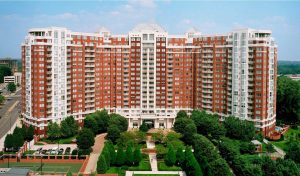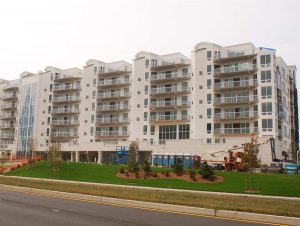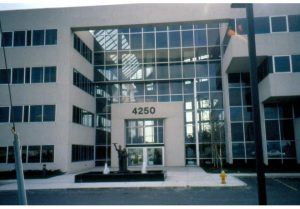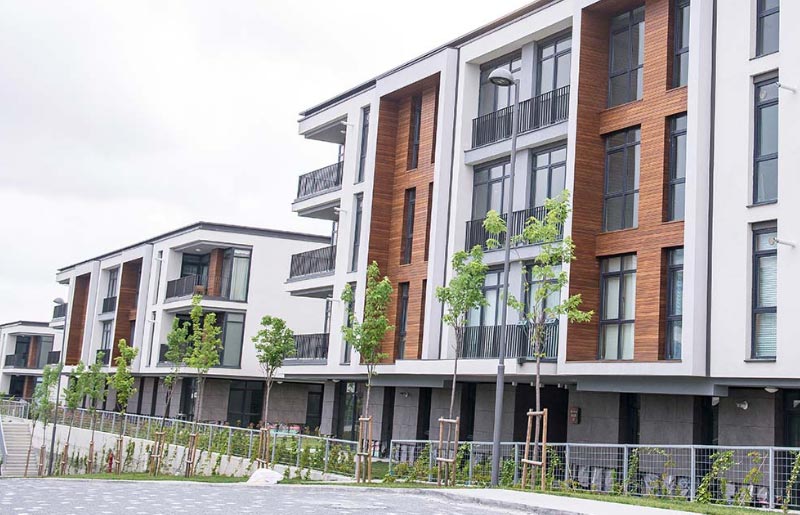
Contact Vescom
Composite Joist Structural Floor Systems Michigan
Vescom’s composite joist construction floor system offers stronger and shallower floors at a fraction of the cost of traditional steel floor framing methods.
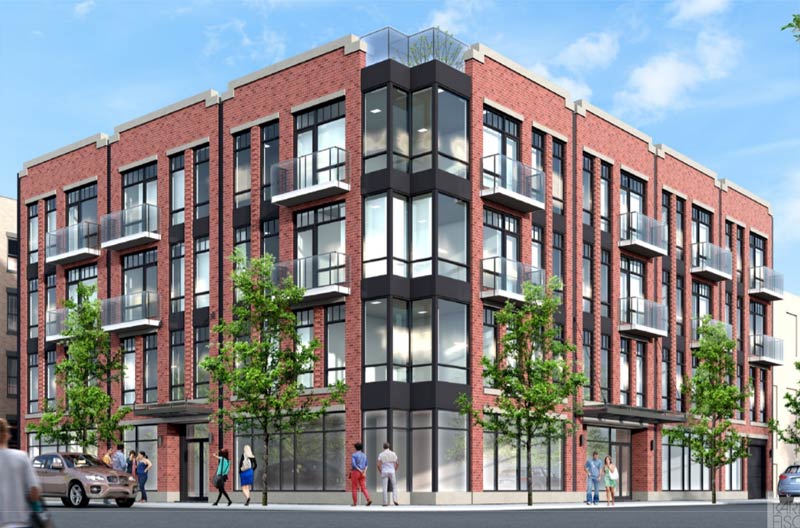
Vescom International is a steel joist and structural floor system manufacturer. The Vescom Joist Structural Floor System can be used all types of multi-story residential, multi-residential, institutional, healthcare, and commercial constructions and buildings. Vescom Joists can be used to construct structures up to 19 stories and are ideal for:
- Multi-residential constructions
- Apartment Buildings
- Condominiums
- Student Housing
- Hotel and Resorts
- Senior Living and Nursing Homes
- Medical Facilities
- Office Buildings
- And Many Other Structures
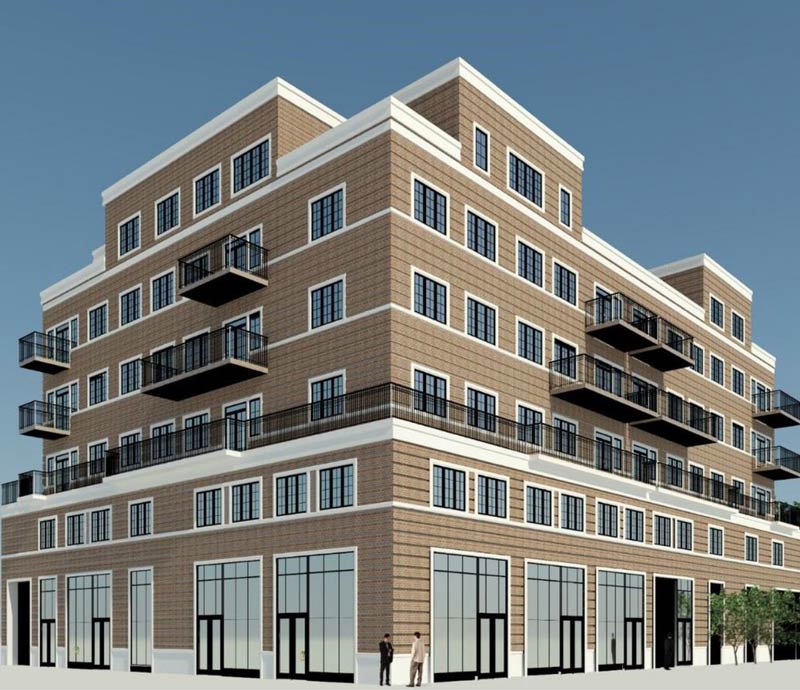
Composite Floor Joists in Michigan, MI
Vescom International manufactures the following composite joist flooring solutions and delivers them to Michigan, MI:
- Composite joists
- Composite floor joists
- Steel floor framing
- Concrete joist system
- Concrete joist support
- Steel flooring system
- Structural flooring
- Structural floor system
- Joist slab
- Structural floor systems
- Light gage steel framing
- Steel floor joists residential
- Composite building
- Structural floor
- Composite floor systems
- Steel floor system
- Composite concrete flooring
- Steel frame flooring
- Steel flooring systems
- Floor joist system
- Concrete floor joist
- Suspended floor systems
- Concrete floor joists
- Steel roof decks
- Metal deck
- Roof decking
- Steel deck
- Joist girder
- Steel girder truss
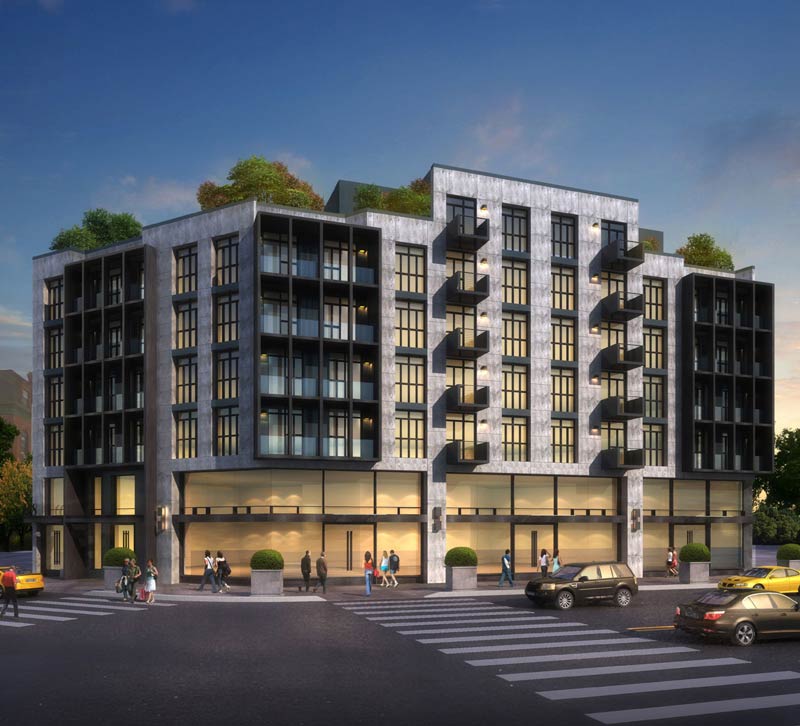
Multi-Residential Construction in Michigan:
If you are searching for a company to provide any of the following in Michigan, MI, kindly consider sending your drawings to our team at Vescom. We will provide you with a quote using our composite joist system that could save you significantly on your construction costs.
- Metal deckings
- Composite deck
- Floor systems
- Rated floor
- Cold form steel
- I-span
- Steel components
- Wood joists
- Floor structure
- Steel beams
- Steel trusses
- Floor joist
- Ceiling joist
- Decking joists
- Floor trusses
- Steel joist
- Bar Joist
- Steel deck
Vescom recommends these organizations, their content and material for information about the composite joist industry and technology:
If you are searching for a company to provide any of the following, kindly consider sending your drawings to our team at Vescom. We will provide you with a quote using our composite joist system that could save you significantly on your construction costs.
Frequently Asked Questions
Q: What is a composite joist?
- A: A composite joist, also known as a composite steel joist, is a type of structural member used in construction to support floors and roofs. It is made by combining two or more materials, usually steel and concrete, to create a stronger and more efficient joist.
Composite joists typically consist of a steel top chord, a steel bottom chord, and a concrete slab sandwiched between them. The steel chords provide tensile strength and rigidity, while the concrete slab provides compression strength and mass. The combination of these materials results in a lightweight and durable joist that can span long distances and support heavy loads.
Composite joists are commonly used in commercial and industrial buildings, as well as in multi-story residential buildings. They offer several advantages over traditional joists, including increased strength, stiffness, and fire resistance, as well as improved acoustic and thermal performance.
Q: What is structural flooring?
- A: Structural flooring refers to a type of flooring system that is designed to provide both a walking surface and structural support for a building or structure. Unlike non-structural flooring, such as carpet, vinyl, or tile, structural flooring is capable of bearing heavy loads and transferring them to the building's foundation or support structure.
Structural flooring is commonly used in commercial and industrial buildings, such as warehouses, factories, and distribution centers, as well as in multi-story residential buildings. It is also used in bridge construction, where it serves as both a roadway and a structural element.
There are several types of structural flooring systems, including concrete slabs, precast concrete planks, steel decking, and composite joists. The choice of flooring system will depend on a variety of factors, including the building's design, the required load-bearing capacity, and the desired aesthetic appearance.
Overall, structural flooring plays a critical role in the overall strength and stability of a building or structure, and it is an essential component of any construction project that requires durable and reliable support.
Q: What are steel trusses?
- A: Steel trusses are a type of structural element commonly used in the construction of buildings, bridges, and other structures. They are typically made from steel beams arranged in a triangular pattern, with each beam forming one side of the triangle.
The triangular shape of steel trusses provides excellent strength and stability, allowing them to span long distances and support heavy loads without the need for intermediate columns or supports. This makes them ideal for use in large, open buildings and structures, such as warehouses, factories, and sports arenas.
Steel trusses can be manufactured in a variety of shapes and sizes, depending on the specific needs of the project. They can be straight or curved, and may be designed to have a single or multiple web configurations. Additionally, they can be bolted, welded, or riveted together to form larger assemblies, depending on the required load capacity and structural performance.
Overall, steel trusses are a versatile and durable structural element that offer many advantages in terms of strength, stability, and ease of construction. They are commonly used in a wide range of applications and are an essential component of many modern construction projects.
Vescom International provides exceptional structural performance, unmatched in the marketplace, for multi-level construction in the following states in The United States of America:
Alabama, AL – Alaska, AK – Arizona, AZ – Arkansas, AR – California, CA – Colorado, CO – Connecticut, CT – Delaware, DE – Florida, FL – Georgia, GA – Hawaii, HI – Idaho, ID – Illinois, IL – Indiana, IN – Iowa, IA – Kansas, KS – Kentucky, KY – Louisiana, LA – Maine, ME – Maryland, MD – Massachusetts, MA – Michigan, MI – Minnesota, MN – Mississippi, MS – Missouri, MO – Montana, MT – Nebraska, NE – Nevada, NV – New Hampshire, NH – New Jersey, NJ – New Mexico, NM – New York, NY – North Carolina, NC – North Dakota, ND – Ohio, OH – Oklahoma, OK – Oregon, OR – Pennsylvania, PA – Rhode Island, RI – South Carolina, SC – South Dakota, SD – Tennessee, TN – Texas, TX – Utah, UT – Vermont, VT – Virginia, VA – Washington, WA – West Virginia, WV – Wisconsin, WI – Wyoming, WY
VESCOM News:
A Revolution in Structure
Explore our website to see how Vescom is revolutionizing the construction industry.
Vescom Typical Details
To assist in the work of specifying professionals, we have developed typical Vescom details for their use. These details...
Fun Facts About Michigan
- Capital: Lansing
- Year Founded: 1837
- Major Cities: Detroit, Grand Rapids, Warren, Sterling Heights, Ann Arbor, Lansing
- Borders: Ohio, Indiana, Wisconsin, Minnesota (via Lake Superior), Canada
- Gross Domestic Product (GDP) Millions USD: $400,504
- Population: 9,938,444
- Land Area (Sq Miles): 58,216
- High Point (Feet): 1,979
- Other Facts: “Key Industries: Agriculture including cherries, blueberries, corn, soybeans, cattle, and milk, Automobile manufacturing, technology, furniture, mining (copper, iron), and tourism. How Michigan got its name: The name Michigan comes from an Algonquian Indian word that means big water. Michigan State Symbols: State Nickname: Great Lakes State; State Slogan: Great Lakes, Great Times; More To See.; (formerly) Water/Winter Wonderland; previously on its license plate; State Motto: Si quaeris peninsulam amoenam circumspice (If you seek a pleasant peninsula, look around you); State flower: Apple blossom; State Bird: American Robin; State Fish: Brook trout; State Tree: White Pine; State Mammal: White-tailed deer; State Foods: Cherry; Becoming a State: Date Admitted: Thursday, January 26, 1837; Number Admitted: 26; Prior Name: Michigan Territory; Postal Abbreviation: MI. The Geography of Michigan: Total Size: 56,804 sq. miles (source: 2003 Census); Geographical Low Point: Lake Erie at 571 feet (source: U.S. Geological Survey); Geographical High Point: Mt. Arvon at 1,979 feet, located in the county/subdivision of Baraga (source: U.S. Geological Survey);Central Point: Located in Wexford County approx. 5 miles north-northwest of Cadillac (source: U.S. Geological Survey); Counties: 83 (source: National Association of Counties); Bodies of Water: Lake Superior, Lake Michigan, Lake Huron, Lake Erie, Lake St. Clair, Detroit River, St. Marys River, Grand River; Famous People: Edna Ferber – Author; Henry Ford – Founder of the Ford Motor Company; Gerald Ford – The 38th President of the United States (grew up in Michigan); Magic Johnson – Professional basketball player; Charles Lindbergh – Aviator who flew the Spirit of St. Louis across the Atlantic Ocean; Madonna – Singer and actress; Floyd Mayweather – Boxer; Burt Reynolds – Actor; Smokey Robinson – Singer; Kid Rock – Singer; Tom Selleck – Actor; Serena Williams – Tennis player; Stevie Wonder – Singer and songwriter; More Fun Facts: Michigan borders four of the five Great Lakes.; It has over 10,000 lakes and the longest freshwater shoreline in the world.; The Mackinac Bridge connects Michigan’s Upper and Lower Peninsulas.; Lake Michigan is the only Great Lake that is entirely within the United States.; Sometimes Michigan is called the Wolverine State.; Detroit is the car capital of the world with General Motors, Chrysler, and Ford. It is often called Motor Town or Motown.; Motown Records was founded in Detroit by Barry Gordy in 1959.; The University of Michigan was the first university founded by a state. It was founded in 1817 under the name Catholepistemiad.; Kellogg’s Cereal company is headquartered out of Battle Creek. Each year they have a cereal festival where they set up the world’s longest breakfast table.; No matter where you are in Michigan, you are always within 85 miles of a Great Lake. Professional Sports Teams: Detroit Lions – NFL (football); Detroit Pistons – NBA (basketball); Detroit Red Wings – NHL (hockey); Detroit Tigers – MLB (baseball).” Citation: Nelson, Ken. “United States Geography for Kids: Michigan .” Ducksters, Technological Solutions, Inc. (TSI), https://www.ducksters.com/geography/state.php?State=Michigan
- Page ID: Michigan_United_States_22
- Set ID: United_States_State

